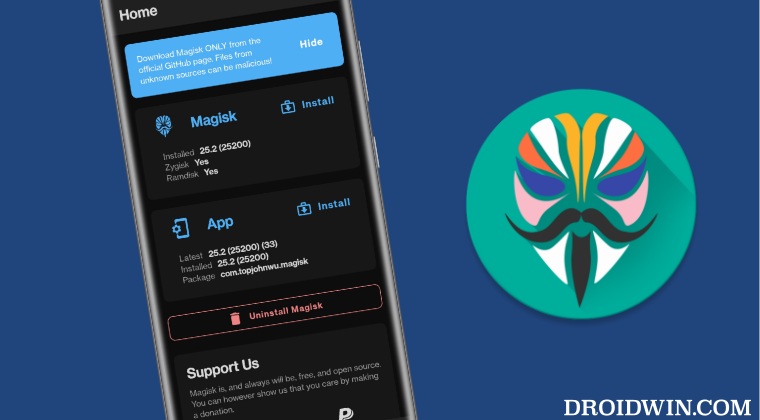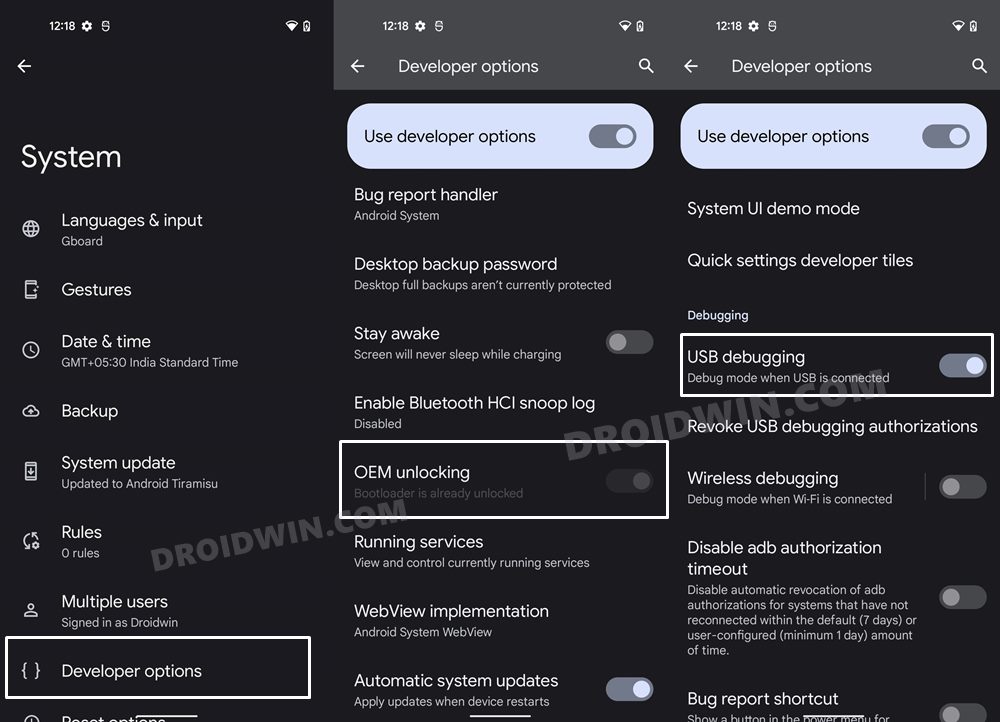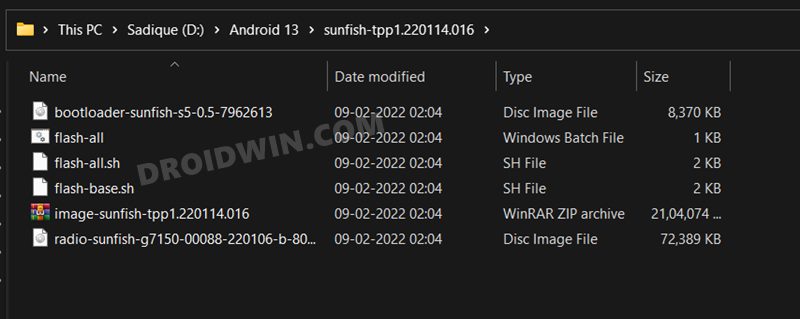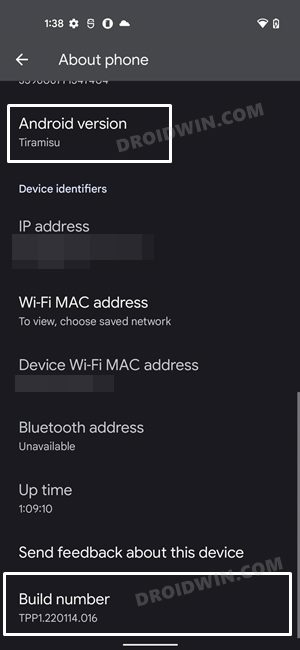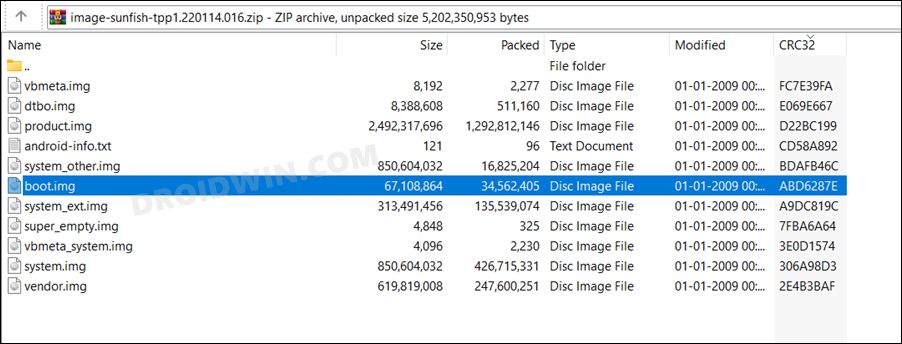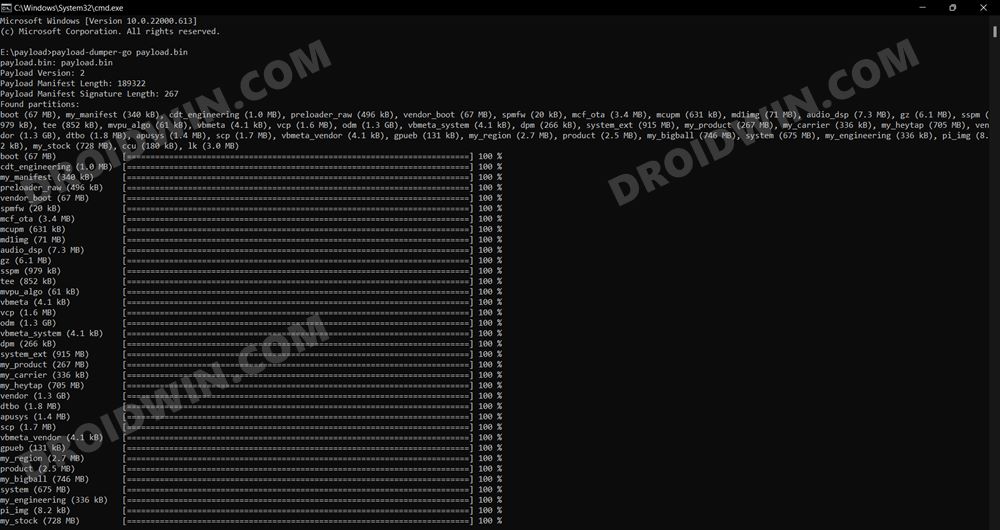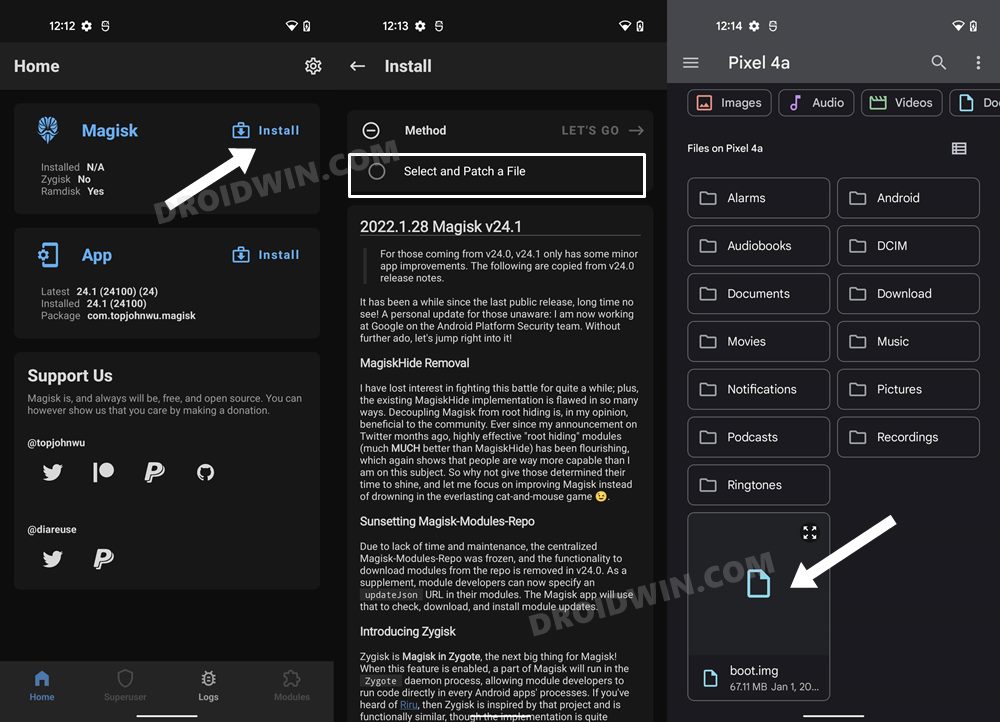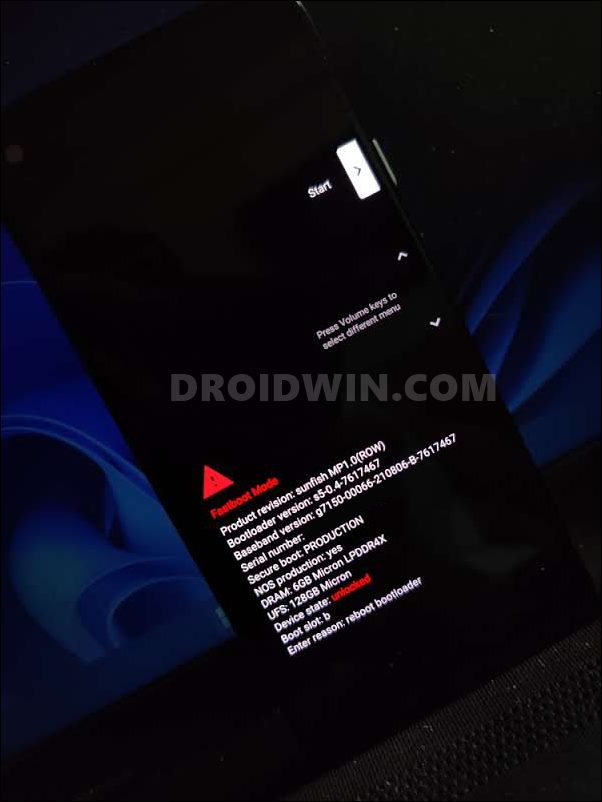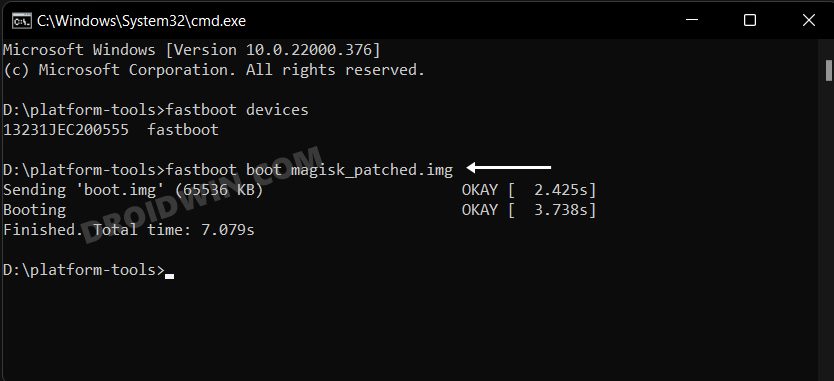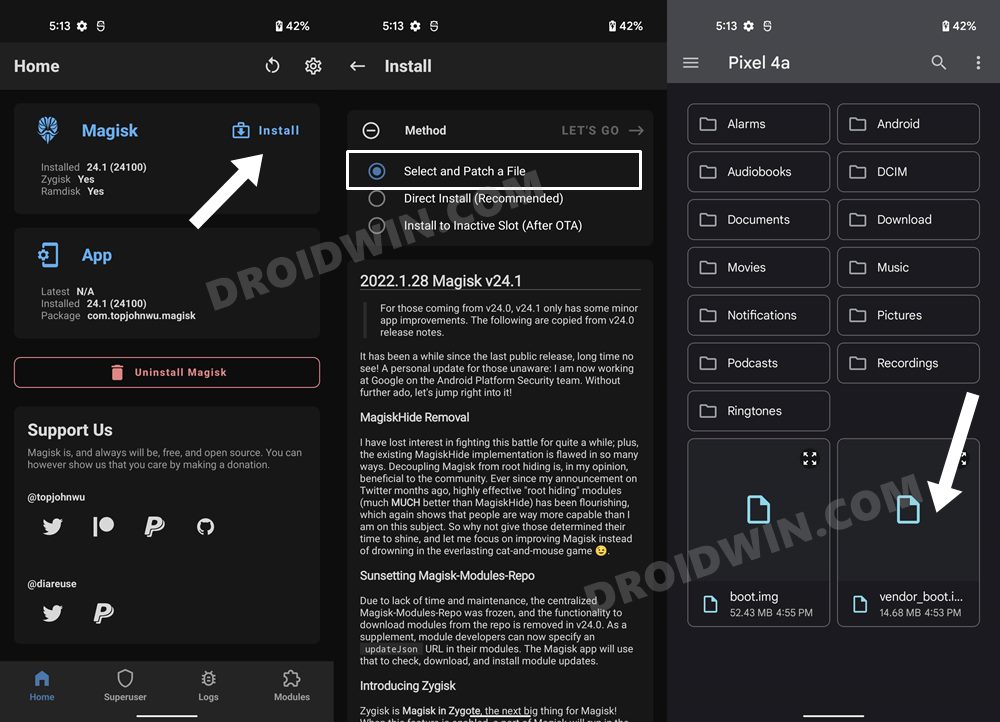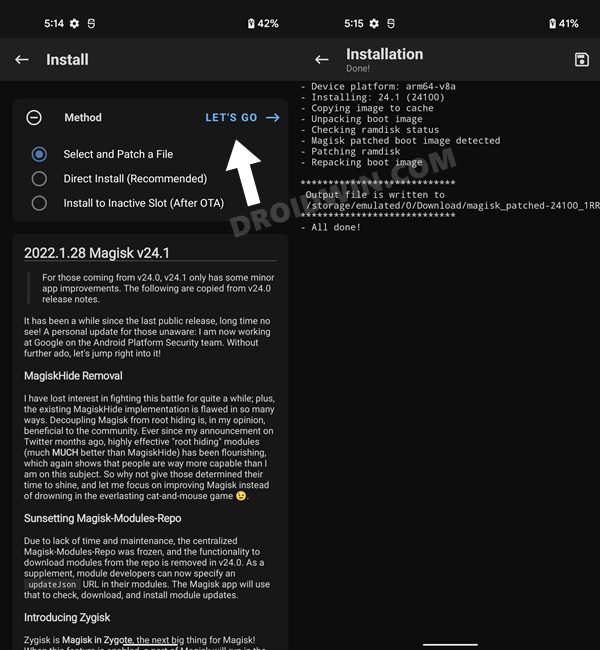But for us, the tech enthusiast, rooting is still at the top of the priority queue as there as some mods that none of the OEMs could compete with [Viper4Android being the perfect example of the same]. So in this regard, there exist two different methods through which you could root your Android device- using WRP and without TWRP. Earlier, using a custom recovery was the de-facto choice for rooting, however, now that has been replaced with the non-TWRP method, mainly due to the complications involved in developing a recovery from Android 12 onwards. So keeping all these points in mind, this guide will show you the steps to root your Android device without TWRP. But first, let’s have a sneak peek at the benefits and risks involved in this process.
Benefits and Risks of Rooting
Once you root your device, you will be in a position to flash a plethora of mods. These include the likes of Magisk Modules, Substratum Themes, Xposed Framework via LSPosed, and Viper4Android among others. Along the same lines, you could also flash a custom kernel and implement your desired CPU profile. However, such tweaks do come in with a few risks as well. To begin with, rooting requires you to unlock the bootloader- which will wipe off all the data and could nullify the warranty as well. Likewise, SafetyNet will be triggered [FIXED] which will result in your inability to use banking apps [FIXED]. So if all that’s well and good, then let’s get started with the steps to root your Android device without using TWRP Recovery.
Root Android Devices without TWRP Recovery
The below instructions are listed under separate sections for ease of understanding. Make sure to follow the same sequence as mentioned. Droidwin and its members wouldn’t be held responsible in case of a thermonuclear war, your alarm doesn’t wake you up, or if anything happens to your device and data by performing the below steps.
STEP 1: Install Android SDK
First and foremost, you will have to install the Android SDK Platform Tools on your PC. This is the official ADB and Fastboot binary provided by Google and is the only recommended one. So download it and then extract it to any convenient location on your PC. Doing so will give you the platform-tools folder, which will be used throughout this guide.
STEP 2: Enable USB Debugging and OEM Unlocking
Next up, you will also have to enable USB Debugging and OEM Unlocking on your device. The former will make your device recognizable by the PC in ADB mode. This will then allow you to boot your device to Fastboot Mode. On the other hand, OEM Unlocking is required to carry out the bootloader unlocking process.
So head over to Settings > About Phone > Tap on Build Number 7 times > Go back to Settings > System > Advanced > Developer Options > Enable USB Debugging and OEM Unlocking.
STEP 3: Unlock Bootloader
Next up, you will also have to unlock the device’s bootloader. Do keep in mind that doing so will wipe off all the data from your device and could nullify its warranty as well. So if that’s all well and good, then please refer to our detailed guide on How to Unlock the Bootloader on any Android Device.
STEP 4: Extract Stock Boot.img
STEP 5: Patch Boot.img via Magisk
STEP 6: Boot to Fastboot Mode
STEP 8: Boot Android using Magisk Patched Boot.img
It is always recommended to first boot your device via the patched boot.img, rather than directly flashing it. This way you will be able to check if everything is working well or not. If everything is on the good side, then you may proceed to the permanent root. If for some reason, the patched boot.img fails, then you just need to restart your device once. Upon the next reboot, the patched boot will be replaced by stock boot.img and your device will then boot to the OS. So use the below command to boot your device via Magisk patched boot.img and hence attain temporary root.
STEP 9: Permanent Root Android Device via Magisk Direct Install
Now that your device is booted without any issues with a temporary root, let’s now make this root permanent. So refer to the below instruction steps to try it out. So with this, we round off the guide on how you could root your Android device via Magisk patched boot.img without using TWRP. If you have any queries concerning the aforementioned steps, do let us know in the comments section below. We will get back to you with a solution at the earliest.
Fastboot Boot vs Fastboot Flash for Root
As already discussed before, we choose fastboot boot to root your device because in case something goes wrong [say, you have used an incorrect boot.img file] and you had done temporary root, then simply restarting your device would replace the patched boot with stock boot and this will fix the bootloop issue within seconds. On the other hand, if you had permanently rooted and something went wrong, then upon restating, it will still have the corrupt patched boot [since you had permanently installed it].
So you will then have to manually flash the stock boot.img or in some cases, the entire payload.bin via Fastboot Commands. Apart from that, temporary root has many other benefits. For example, if you need to test a module for just a one-time usage, then you could temporarily create a rooted environment, try out that mod, and then restart your device to remove the root! Owing to all these benefits, we used the temporary boot method to root your Android device via Magisk without TWRP.
Disabling vbmeta for Root
Many Xiaomi devices require you to flash the vbmeta and disable verification/verity checks before you could boot your device to the rooted OS. Here’s how it could be done:
Flash Patched Vendor_Boot for Root
Apart from the patched boot and vbmeta, some devices like the OnePlus 10 series require you to patch and flash the vendor_boot as well. Here’s how it could be done:
Rooting Samsung Device via Magisk without TWRP
When it comes to rooting Samsung devices, then the process is somewhat different in comparison with the rest of the devices. In Samsung, you will first have to download the firmware via Frija, extract the AP file, patch it via Magisk and then flash it in the Download Mode via Odin. So if you own a Samsung device, then please check out our separate guide on Root Samsung Devices via Magisk Patched AP.
FIX Couldn’t parse partition size ‘0x’
If you get the fastboot: error: Couldn’t parse partition size ‘0x’ issue, as some users have mentioned in the comments, then please refer to our detailed guide: How to Fix fastboot: error: Couldn’t parse partition size ‘0x’.
How to Hide Root from Apps via Magisk DenyList [Android 12/13]How to Install OTA Updates in Rooted Android DeviceGuide to Pass SafetyNet on Rooted Android 12/Android 13How to Pass the SafetyNet test after installing Xposed or EdXposed
About Chief Editor
